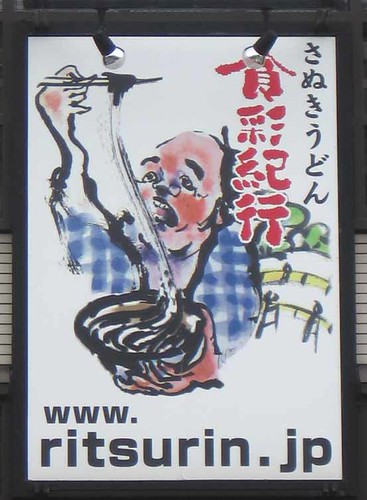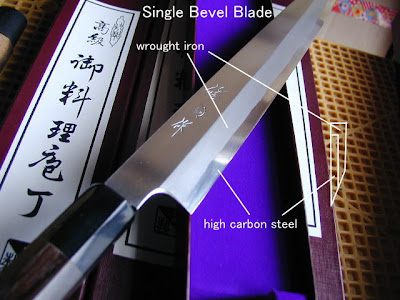::::::::::::::::::::::::::::::::::::::::::::::::::::::::::::::::::::::::::::::::::::::::::::::::::::
GENERAL INFORMATION ... In our Washoku BLOG
abare-ichi あばれ市 "Wild market sales" extra cheap sales days
. accessory アクセサリー .
Aemono ... Japanese dressing
Agri-fashion アグリファッション Agrifashion
Agrizm(アグリズム) Magazine
Akiyama Tokukzo 秋山徳蔵 cook for the Tenno (1888 - 1974)
ame-uri, ameuri 飴売り vendor of candy in Edo
Ameyoko あめよこ (アメ横)Cheap shopping alley, from Ueno to Okachimachi
..... Reference: Kappabashi for plastic food
Anecdotes about Japanese Food
Aomonochoo 青物町 Aomonocho "vegetable" district
Asagohan, asameshi ... Japanese Breakfast
Asaichi, Morning Market (asa ichi, asa-ichi 日本三大朝市) Morgenmarkt
Asian Food Regulation Information Service
Bamboo, as food or tool in daily life
B Kyuu Gurume B級グルメ Second Class Gourmet B-kyū gurume
Bento and Ekiben Lunchpakete und O-Bento am Bahnhof
Bizenyaki, Pottery from Bizen
. BOOKS and online reference .
Bunraku and Joruri 文楽.浄瑠璃 and wasabi
Chanoko, 茶の子 Snack served with tea (cha no ko, o-cha no ko)
Cherry Blossom Time ... some Food Kigo
Chinmi, special delicasies
Chuka Ryori, chuuka ryoori 中華料理 Chinese Food
Chinatown 中華街 in Yokohama, Kobe and Nagasaki
conbini コンビニ / コンビニエンスストア convenience store Combini
Containers for food, new materials P-Plus P-プラス
Daidokoro 台所 (だいどころ) Japanese Kitchen
Daietto ダイエット Diet and fasting ... the extreme : Sokushinbutsu 即身仏
Dango 団子 Dumplings of all kinds
... Tsukimi and MORE dango ...
Danshi Gohan 男子ごはん, 太一×ケンタロウ men are cooking !
. . . bentoo danshi 弁当男子 lunchbox men
Daruma and Food ... LINKS
Dengaku 田楽 dance and food
doggii baggu ドッギーバッグ doggy bag
Donburi 丼 Bowl of rice with topping
Ecotarian Food エコタリアン Slow food, スローフード
EDO : 100 Favorite Dishes of Edo 江戸料理百選
Edo no Shokubunka 江戸の食文化 Food Culture of Edo, LINK list
Edo-Vegetables (Edo yasai 江戸伝統野菜)
Edo wazurai 江戸患い "the Illness of Edo"
Ekiben 駅弁 Station Lunch Boxes ABC-Index, Lunchpaket vom Bahnhof
Expo, exhibitions, food fairs and more food news
Famine in spring (shunkyuu) Famine in Japanese History. kikin 飢饉
Fast Food Gourmet ... the Japanese Versionshominha gurume 庶民派グルメ
Food Crisis Worldwide
Food safety in Japan
Fucha ryori, fucha ryoori 普茶料理 Chinese monk quisine of the Obaku sect of Zen
funaryoori 船料理 (ふなりょうり) food served on board a ship or boat
Functional Foods 特定保健用食品 tokuho
Food for Specified Health Uses (FOSHU)
- - - . 機能性表示食品 kinosei hyoji shokuhin .
new labels in May 2015
Furikake and Ochazuke ... toppings for a bowl of rice 振り掛け, お茶漬け
Futsukayoi ふつかよい(二日酔い/ 宿酔 )
hangover and its natural remedies
Gangu 郷土玩具 Folk Toys
manjuu kui ningyo 饅頭食い人形 doll eating a manju bun
Geemu ゲーム Games and Food yasai karuta 野菜かるた and more
. Goroawase 語呂合わせ wordplay with food .
goshiki 五色 the five colors and food
Gyaru ギャル gals, girls
noogyaru 農ギャル / ノギャル nogyaru, farming girls
ugyaru 魚ギャル / ウギャル fishing girls
Gyuunyuu 牛乳 and so 蘇(そ) milk products of the Asuka period
Hachi 八 The Lucky Number Eight - 8
Hakubutsukan, 食文化博物館 Food Museums and Theme Parks
Hanbaiki 販売機 vending maschines for food
Hanga and Nihonga ... 版画 / 日本画 Japanese Food in Art
Hara hachibu ... eating only 80% of your capacity an Okinawan diet
Hatago (旅籠, 旅篭) lodgings, inns and guest houses
History of Japanese Food
- - - Food and Drink in the Heian Period (794 to 1185) 平安時代
hiyashimono 冷し物 cold food
----- and
kanshoku 寒食 (かんしょく) "cold food" for a ritual in Okinawa
Hocho, wabocho . 和包丁. Knife, knives (hoochoo, waboochoo)
Hooroku 焙烙 / 炮烙 / ホーロク / ほうろくearhten roasting pot and Hooroku Jizo ほうろく地蔵 and a kyogen play, 炮烙割り "smashing pots"
Horegusuri ほれぐすり(惚れ薬, 惚薬) love potion
Italian Food (itarian ryoori イタリアン料理)made in Japan
Joomon, Jōmon 縄文時代 Jomon Peroid Cooking
Juken fuuzu 受験フーズ Juken Food for the Examination Hell
Kagurazaka 神楽坂 restaurant district in Tokyo
Kaiseki Ryori, kaiseki ryoori 懐石料理
Kappoo ryoori 割烹料理 Kappo food, a simpler style of Kaiseki Food
Kayu 粥 rice gruel with many kigo
Kazari ... Decoration of table and food 食卓の飾り
kenkoo shokuhin 健康食品 health food Supplements, Macrobiotics
kinkatsu 菌活 active bacteria
Kitaoji Rosanjin (北大路魯山人) ... and the Japanese Vessels for Food, Utsuwa
Konchu Ryori, konchuu ryoori 昆虫料理 Insects as food
Kusuri
Medicine Day (kusuri no hi)Chinese Medicine as food for your health !
kyoogibune, kyōgibune 経木舟 kyogibune
boat for serving, from paper-thin sheets of wood
Kyoyasai, kyooyasai 京野菜 vegetables from Kyoto
Kyuushoku 給食 School Lunch Schulspeisung, Schulessen
Language, Japanese and Food
Mamiya 間宮, Irako 伊良湖 food supply ships
Mamiya yokan 間宮羊羹
Mandala Food Arrangements (hoshamori, hooshamori 放射盛り)
Manga, Anime and Japanese Food Culture
料理漫画. 料理アニメ. グルメ漫画
Mashiko Pottery, Folk Craft Mashikoyaki, mingei
Matsuri, Festival Food
Menrui ... all kinds of noodles 麺類
Meoto Tableware for Couples
Rice bowls : meotojawan 夫婦茶碗 , chopsticks : meotobashi 夫婦箸, tea cups : meotoguinomi 夫婦ぐい呑み , meoto yunomi 夫婦湯のみ
Modoki ryoori もどき料理 "imitation food" vegetarian dishes. ganmodoki
Mori no megumi Bountiful food from the Forest
Mukimono むきもの Vegetables cut to artistic figures
Music and Food for animals and plant growing
Nagasaki and the influence of European food
Net Super - Online Shopping
Nokisaki Business 軒先.com "under the eaves"
Noren 暖簾store curtains
omocha おもちゃ Cooking Toys and Gangu 郷土玩具
Oyatsu お八つ . o-cha-uke 御茶請け afternoon snack
Pareo foodo パレオフード paleo food, Paleo diet Paleolithic Diet
Pan パン bread
toosuto トースト toast
. Poetry and Japanese Food .
Haiku 俳句 and haika 俳菓 - waka 和歌
Presents during all seasons
Recycle, Reuse, Re-use Wiederverwendung von Lebensmitteln
Restaurants and Tea stalls (ryooriten, ryokan, chaya, izakaya and more )
Robatayaki ... around the open hearth Kushiyaki, skewers
Rural Revitalization and Promotion
Sake no Hosomichi 酒のほそ道 "The Narrow Road of Ricewine"
Manga about food, with haiku, by ラズウェル細木 Rozwell Hosoki
Sashimi, Raw Food raw fish, wild boar, horse, pheasant ...
Rito Keizai Shimbun 離島経済新聞 Archipelago News
introducing local island food
Samurai Gourmet "武士の食卓" - Samurai Cooking
Satoyama 里山 さとやま Local Mountain Region Ecology
seibo, o-seibo, oseiboo 歳暮, o-chugen, ochuugen 中元
Presents during all seasons
Senbei, sembei 煎餅 (せんべい) rice crackers, sweet and salty
shika senbei tobashi, throwing deer senbei, kigo
Sen Rikyuu, Sen Rikyū 千利休 Sen no Rikyu favorite dishes
Settai, O-Settai ... Giving Alms to Henro Pilgrims SETTAI : Henro Pilgrims Culture in Shikoku
Sex and Food / Penis Festivals
Shiro 城 Castle Burgen. and related food items
Shogayaki, ginger roast dishes
Shokuyoo no hana 食用の花 Edible blossoms, edible flowers
Shojin Ryori (shoojin ryoori) 精進料理Vegetarian Temple Food
including
Fucha Ryori (fucha ryoori 普茶料理)
Shopping in Japan Shopping for food
Shufu 主婦 / 主夫 ... housewife, homemaker. Hausfrau
SHUN 旬の物 / 旬の味 Specialities of the Season
Shusse uo 出世魚 "career fish" fish changing the name as they grow
Snap Dish, snapdish photo software
somurie ソムリエ sommelier for wine, fruits, vegetables and other food
fuudo somurie フードソムリエ - food sommelier
Sooshoku otoko 草食男子 grass-eaters and
nikushoku onna 肉食女 "meat-eating girls" / 草食系男子
Soups of Japan, an overview
Sushi 寿司
Tera ... Temple Festivals and Food
Terminology used for Japanese Cooking
Tobeyaki, Tobe pottery
Tokuho Health Label
Tools used for Cooking
Trans-Pacific Partnership - TPP
Tsuchinoko, tsuchi no ko ツチノコ or 槌の子 hammerspawn legendary reptile
Tsukemono and how to make them ... 漬物
Tsukiji, the big fish market in Tokyo 築地市場, Tsukiji shijoo
Tsumami, o-tsumami, otsumami 御摘みSnacks with alcohol. Horsd’œuvre.
Umi no sachi, yama no sachi ...
Bountiful food from the sea, bountiful food from the mountains
The Origin.
. UNESCO - Nomination Washoku - .
Waseda Kankyo Juku 早稲田環境塾 Waseda School of Environment
Washoku Sahoo 和食作法 Table manners, etiquette
Japanese Table Manner 和食作法 Ishimura Kanae 石邨可奈江, Okayama. Grace Finishing School グレースフィニッシングスクール.
motenashi 持成しの心 and shitsurai 失礼 hospitality
honzen ryoori 本膳料理 formal banquet food on trays
Water (nomimizu) Drinking Water of Japan
Western vegetables used in Japan
Whisky, whiskey, uisukii ウイスキー
online reference
Burbon, Whiskey-Soda
Wrapping Paper Art / Food Art
Yakuzen, yaku-zen 薬膳 ( やくぜん) "Eating Medicine" medicinal food dishes and Traditional Chinese Medicine (TCM)
Kanpo, Chinese Medicine as food (kanpo 漢方薬)
kenkoo ryoori 健康料理 food for your health
yakuzen ryoori 薬膳料理 food with medicinal propertirs
yakusoo ryoori 薬草料理 food with medicinal herbs
yakujiki (やくじき)
kusudama 薬玉 クスダマ food with yomogi mugwort Beifuss
Speisen mit Heilkräutern, Medizin-Essen
Speisen als Medizin
Yookai (youkai, yokai) 妖怪 Japanese monsters and food
Zen, Tray, Dinner tray, box tray (hako zen) ...

:::::::::::::::::::::::::::::::::::::::::::::::::::::::::::::::::::::::::::::::::::::::::::::::::::
Zeittafel
Jomon-Periode ca. 8000 - ca. 300 v.Chr.
Yayoi-Periode ca. 300 v. - ca. 300 n.Chr.
Kofun Hügelgräber-Periode 247-552
Asuka-Periode 552-646
Hakuho-Periode 646-710
Nara-Periode 710-794
Heian-Periode 794-941
Kamakura-Periode 1192-1333
Zeit der Nord- und Süddynastie 1336-1392
Muromachi-Periode 1392-1568
Azuchi-Momoyama-Periode 1573-1603
Edo-Periode 1603-1868
Meiji-Periode 1868-1912
Taisho-Periode 1912-1926
Showa-Periode 1926-1989
Heisei-Periode seit 8.1.1989
:::::::::::::::::::::::::::::::::::::::::::::::::::::::::::::::::::::::::::::::::::::::::::::::::::
My VOKABEL LISTE Japanisch – Deutsch – English
Japanische Gerichte LISTE
REFERENCE - External LINKS
:::::::::::::::::::::::::::::::::::::::::::::::::::::::::::::::::::::::::::::::::::::::::::::::::::::::

. join ! WASHOKU - facebook group .
:::::::::::::::::::::::::::::::::::::::::::::::::::::::::::::::::::::::::::::::::::::::::::::::::::::::
[ . BACK to DARUMA MUSEUM TOP . ]
[ . BACK to WORLDKIGO . TOP . ]
- #generalinformationindex -
:::::::::::::::::::::::::::::::::::::::::::::::::::::::::::::::::::::::::::::::::::::::::::::::::::::::
















